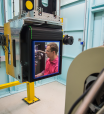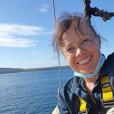Building knowledge of changes in uranium chemistry
A new systematic investigation of the origins of atomic structural distortions in compounds containing uranium has relevance for spent nuclear fuel .

Showing 701 - 720 of 1110 results
A new systematic investigation of the origins of atomic structural distortions in compounds containing uranium has relevance for spent nuclear fuel .



Pip is a passionate creative who is obsessed with applying design thinking to any and every project she can get her hands on, no matter the topic.

Wolfgang Kubicki, MdB and a small delegation visited to see the Spatz neutron instrument donated by Helmholtz Zentrum Berlin (HZB) and discuss research.
The new trilateral security partnership between Australia, the UK and the US (AUKUS) is a historically significant development for nuclear science and technology in Australia.
ANSTO among collaborators to major study of greenhouse gases.
Event held to mark anniversary of SPRing-8 in Japan.
ANSTO presented and participated in a panel discussion at the annual Natural Products Futures Forum in Ballina.

The High Performance Macromolecular Crystallography beamline will enable the study of very small (sub-5 micrometre) or weakly diffracting crystals, providing a state-of-the-art high-throughput facility for researchers. MX3 will be able to study the structures of large proteins and protein complexes for virology, drug design and industrial applications via goniometer mounted crystals, in-tray screening, or via serial crystallography methods.


Singapore researchers publish findings of link between proteins of archaea and eukaryotes despite being separated by more than 2 billion years of evolution.